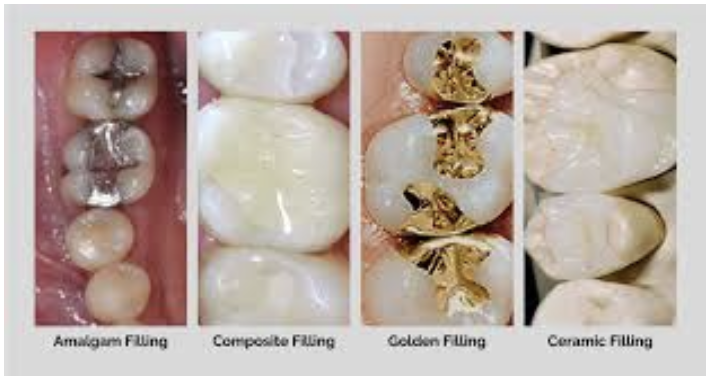
The Different Types of Dental Fillings and Their Benefits
The main types of dental fillings are amalgam, composite, ceramic, gold, and glass ionomer. Each has its own benefits regarding durability, aesthetics, and cost. Amalgam and gold are very durable, making them suitable for back teeth. In contrast, composite and ceramic are aesthetically pleasing and ideal for visible areas like the front teeth. Glass ionomers release fluoride and are suitable for small fillings in children or near the gum line.
Amalgam:
Benefit: Very durable and cost-effective
Consideration: They are silver-coloured and can darken over time.
Composite:
Benefit: Color-matched to natural teeth for a seamless look.
Consideration: Not as durable as metal or ceramic fillings and may require more frequent replacement.
Ceramic (Porcelain):
Benefit: Highly resistant to stains and can be color-matched for a natural appearance.
Consideration: More expensive than composite fillings and may not be suitable for all teeth.
Gold:
Benefit: Extremely durable and has a very long lifespan, often lasting 20+ years.
Consideration: Expensive and noticeable in the mouth.
Glass Lonomer:
Benefit: Releases fluoride to help prevent future decay , which makes them a good choice for children’s teeth or areas near the gum line.
Consideration: Less durable than other options and may need more frequent replacement.
How to choose the right filling:
For durability: Gold or ceramic is the best, especially for back teeth.
For aesthetics: Composite or ceramic is ideal for front teeth.
For budget: Amalgam is typically the most affordable option.
For children or near the gum line: Glass ionomers can be used for their fluoride-relesasing properties.
At the Smile Team, we provide our clients with the best treatment options for them so book a consultation with Dr. Abid Hidayat today. We are open Mondays to Saturdays and speak GUJARATI, HINDI, URDU, TAGALOG and ARABIC. You can reach our family dental care office in Scarborough, Toronto, Ontario, by calling 416-546-5599.
Author – Sakina Hidayat
